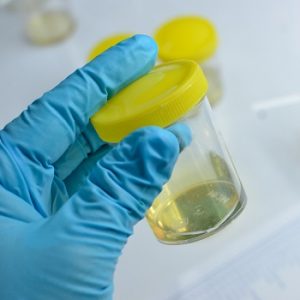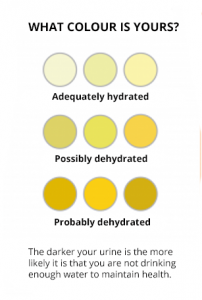
More evidence that low-calorie sweeteners are bad for your health
Studies show that artificial sweeteners can raise the risk of hypertension, metabolic syndrome, type 2 diabetes and heart disease, including stroke.

In a world of complicated ‘oscopies’ and ‘ectomies’ there is a simple test anyone can perform in the privacy of their own home that can tell you a lot about your health.
Next time you have a pee, pay attention to the colour of your urine. Don’t get squeamish about it either, because the colour of your pee can tell you a lot about yourself.
Human urine has been used as a ‘diagnostic’ tool since the earliest days of medicine. Its colour, smell and density all have something to say something about the state of our health.
At the very least the colour of your pee can tell you if you are well hydrated or not and that can be the key to better health.
Symptoms of dehydration
Almost everyone associates thirst with a need to drink more water, but in certain cases thirst isn’t a very reliable indication of your hydration status. You might only notice that you feel thirsty long after you have technically become dehydrated and you might drink a bit of water – but have you drunk enough to really restore your body’s water balance?
The common symptoms of dehydration include:
Chances are if you are suffering from some or all of these symptoms, in the absence of any other health condition, you need to drink some water.
Hydration = health
Lots of things conspire to keep us from drinking enough. Exercise and fatigue or stress can all contribute to a diminished thirst response, and young children also experience thirst less intensely than adults.
As we age our the thirst response also decreases. That means that adults over 50 are less likely to experience thirst as intensely as younger people.
In fact, a recent study found that patients admitted to hospital from care homes are commonly dehydrated on admission and consequently are at significantly greater risks of death while in hospital.
Old and infirm people are at increased risk of dehydration, especially if they require assistance with drinking and, left to themselves, may not drink enough to avoid dehydration. Dehydration leads to high sodium levels, which can have severe consequences.
For instance recent data, presented at the 2015 American Stroke Association’s International Stroke Conference showed that people who are well hydrated at the time of their stroke have a greater chance of better recovery compared to people who are dehydrated.
Check the colour chart
Fortunately, our bodies signal the need for hydration in another obvious way.

This simple colour chart, while not a scientific diagnostic tool, can guide you in understanding what your urine color says about your state of hydration
Urine colour says a lot about our hydration status. Elite athletes and the military have used urine colour charts to track hydration levels for years. But the rest of us could also benefit from the occasional colour check – even children.
In fact a recent study of children aged 8-14 found that found that not only does the urine colour scale normally used by adults apply to hydration levels in children, but that children are able to accurately use the chart to determine their own hydration levels.
So what do we need to know about urine colour?
Generally, the lighter the colour, the more hydrated you are. That’s because dehydration is caused when the volume of water in the body is depleted. When we’re dehydrated, our kidneys, which filter waste, trigger the body to retain water. That means less water in our urine, which makes it more concentrated and therefore darker.
Recognising colours can be a helpful indicator, especially if you notice the change in colour while other symptoms of dehydration are present.
Other influences
Of course, abnormal urine color may indicate a health issue other than dehydration. Talk to your doctor if you’re experiencing abnormal urine color.
Your urine colour can also change according to what you have eaten and what drugs you are taking.
According to WebMD, some of the foods that may change the colour of urine include:
Some of the medicines and vitamins that can change the colour of urine are:
Medical conditions that can change the colour of urine include:
If your pee appears cloudy or murky, it may be a sign of a urinary tract infection or kidney stones.
For many of us, however, darker urine just means we need to be drinking more.
How much is enough?
Judging how much you need is complex and there is not single official amount that we all need.
In most countries, guidelines set by the International Sports Medicine Institute in the US are seen as ‘sensible’, even for non-sportspeople. These recommend 2/3 ounce of water per pound of body weight daily for an active person and ½ ounce per pound of body weight daily for a sedentary person.
This means that an active person weighing 10½ stone (147 lbs) needs 2.75 litres (5½ pints) of water daily. A sedentary person at the same weight needs 2 litres (3 ¾ pints). There are no particular advantages of drinking more than you need or being overhydrated. In fact if your pee is completely clear, you may want to consider cutting back a bit!
For most of us, however, the challenge is drinking enough. If you want to start drinking more we’ve got some resources to help: For more on getting enough see our article Water- too much of a good thing? For suggestions on delicious flavoured water see our article Infused water instead of soda – delicious recipes and tips.

Please subscribe me to your newsletter mailing list. I have read the
privacy statement